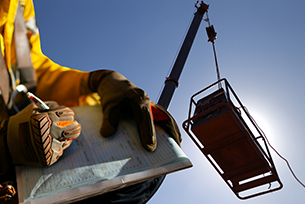
As a vacation student, and, now that I have taken up a position as a candidate attorney at Beech Veltman Incorporated, one of the most important lessons that I have learnt so far, working with the various mines, is just how important health and safety is in the mining industry. South Africa’s mining industry is known for its significant contributions to the economy, but this significant contribution cannot come at the expense of health and safety, and the wellbeing of employees must always be a top priority.
The point of departure is to ensure an understanding of which health and safety legislation applies. While most stakeholders in the mining industry understand that the Mine Health and Safety Act (MHSA) applies, sometimes the Occupational Health and Safety Act (OHSA) can apply, and if the incorrect legislation is applied, this can lead to compliance and enforcement action by the regulators, but more importantly, it can lead to incidents and accidents.
Once employers understand which health and safety legislation applies, employers must take reasonably practicable steps to ensure a safe working environment by implementing comprehensive health and safety programmes. These health and safety programmes must be risk-based, and the starting point for any health and safety programme is carrying out proper, comprehensive hazard identification and risk assessments. If proper hazard identification and risk assessments are not carried out, this could lead to systems failures, and ultimately, incidents and accidents.
With the number of trackless mobile machine (TMM) accidents, and the coming into force and effect of Proximity Detection System Regulations in December 2022, understandably, the focus is on implementation of the proximity detection systems (PDS), both underground and on surface, to avoid interaction between TMMs and between TMMs and pedestrians. TMMs are often extremely large pieces of machinery, with limited visibility. Unfortunately, complacency around these extremely large machines often sets in, with persons taking chances, including removing their personal detection unit so that they can get closer to TMMs, without causing “nuisance” tripping of the equipment and machinery. This is of course unacceptable, but the reasons behind bypassing the PDS, must be investigated thoroughly, because this can lead to minor adjustments to work processes, a working environment, and crew composition, thereby removing the cause of bypassing of health and safety systems.
Compensation for occupational injuries and diseases is regulated by the Compensation of Occupational Injuries and Diseases Act (COIDA) which, in the mining industry, is managed by the Rand Mutual Assurance Company Limited. It is extremely unfortunate that many persons do not have a proper understanding of COIDA, including, for example, that injured employees or dependants of deceased employees cannot initiate civil claims for damages against the employer, because of the provisions of Section 35 of COIDA. Sometimes, families are promised huge amounts of money by representatives, who are not familiar with the specialised health, safety and compensation laws in the mining industry, and this understandably leads to disappointment.
Staying informed about the latest updates in the South African mining health, safety, compensation and employment laws is crucial to maintaining compliance and a harmonious working environment.
Disclaimer: This article is provided for informational purposes only and is not intended to serve as legal advice. Readers should consult one of our legal professionals for advice tailored to their specific circumstances.